MusicRadar Verdict
The onboard voice options might have been scaled down but the Acoustasonic Telecaster sticks the landing as a Player Series model, in what could be one of the guitar to make the hybrid build truly go mainstream.
Pros
- +
More affordable, just as thrilling.
- +
A true acoustic electric hybrid, supremely versatile.
- +
Super-playable and easy to setup.
Cons
- -
Unlike the US model, its preamp is battery operated, which feels like something Fender should address in future updates.
MusicRadar's got your back
Fender Acoustasonic Player Telecaster: What is it?
Fender and its Acoustasonic acoustic electric guitar hybrid is a case study in how it goes with groundbreaking inventions.
At first there’s surprise, maybe a little horror, too. The shock of the new is near overwhelming. But then the elite warms to the idea, embracing the new design’s potential. And so it was with the Fender American Acoustasonic Telecaster. The Strat and Jazzmaster versions followed, the latter the boldest yet.
But there comes a point when said design has to be popularised; it has to graduate to mass appeal. That’s when it has to be more financially accessible. The Acoustasonic had to go mainstream, and it there was an obvious pathway: adding it Fender’s blockbuster Player Series.
Ultimately, when the Player Series Acoustasonic Telecaster was announced, the reaction was not of shock but of ‘what took them so long?’ This, a 1000-dollar Acoustasonic, finally puts one of the most innovative guitar designs in recent history into the hands of more players.
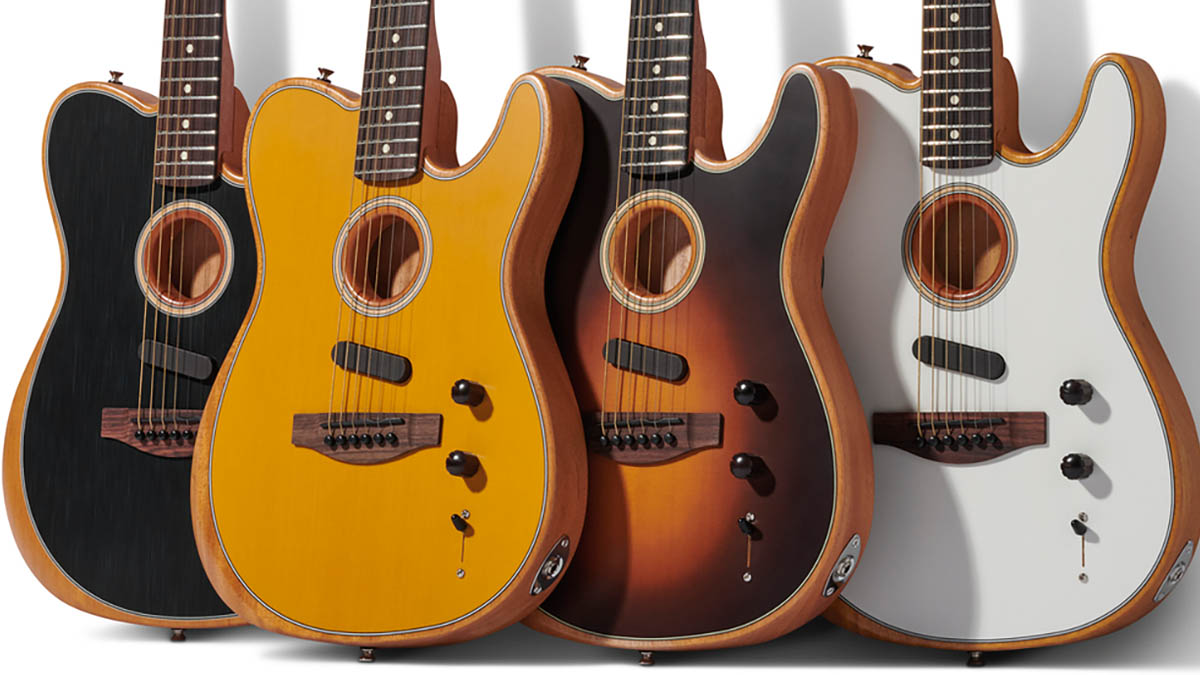
Once more, the Acoustasonic preamp technology – or the Acoustic Engine – is a two-hander between Fender and Fishman. Here it governs an under-saddle piezo and N4 Noiseless single-coil pickup. There key differences between the US and Player Series models are perhaps most tellingly in the electrics.
The American model is chargeable via a USB connection mounted on the jack plate, whereas the Player Series Acoustasonic is powered by a 9V battery, accessed via a compartment on the rear of the instrument.
We have fewer choices when it comes to voices. The American Acoustasonic models featuring 10 voices, and the Player Series offering six from. These are accessible via a three-way blade selector switch and the blend knob, and still present us with a hitherto unparalleled level of versatility from a hybrid build at this price point.
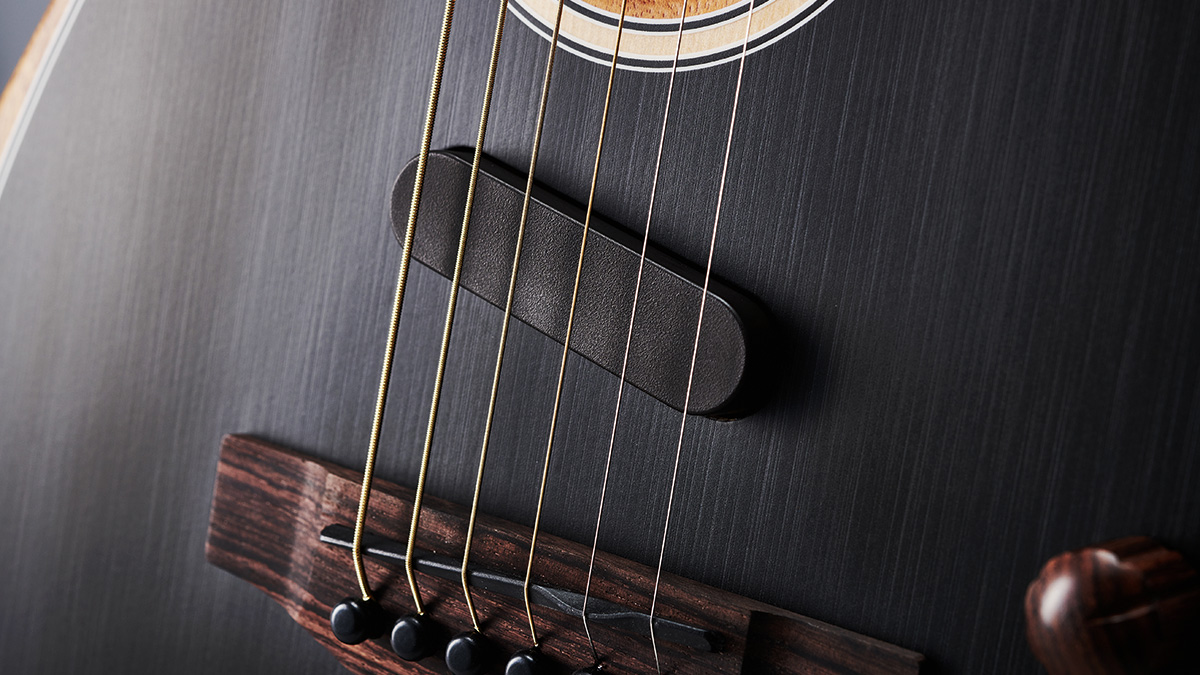
In position three, you’ll find a pair of mahogany small body short-scale and rosewood dreadnought acoustic voices. In position two, you have Lo-Fi Clean, which uses the under-saddle pickup alone, and Lo-Fi Crunch, which Fender says is to replicate the sound of an acoustic and an electric double tracked.
Finally, in position one, you have the choice between the Noiseless Tele pickup and the Fat Noiseless Tele pickup voicing, which is to say you have the Tim Shaw-designed magnetic single-coil at your disposal, in both a clean mode and a sort of boosted, wider-sounding fat mode.
As its name suggests, the blend control is more than just a two-way selector of voice modes; you can mix the two voices together to find the in between tones. Very clever.
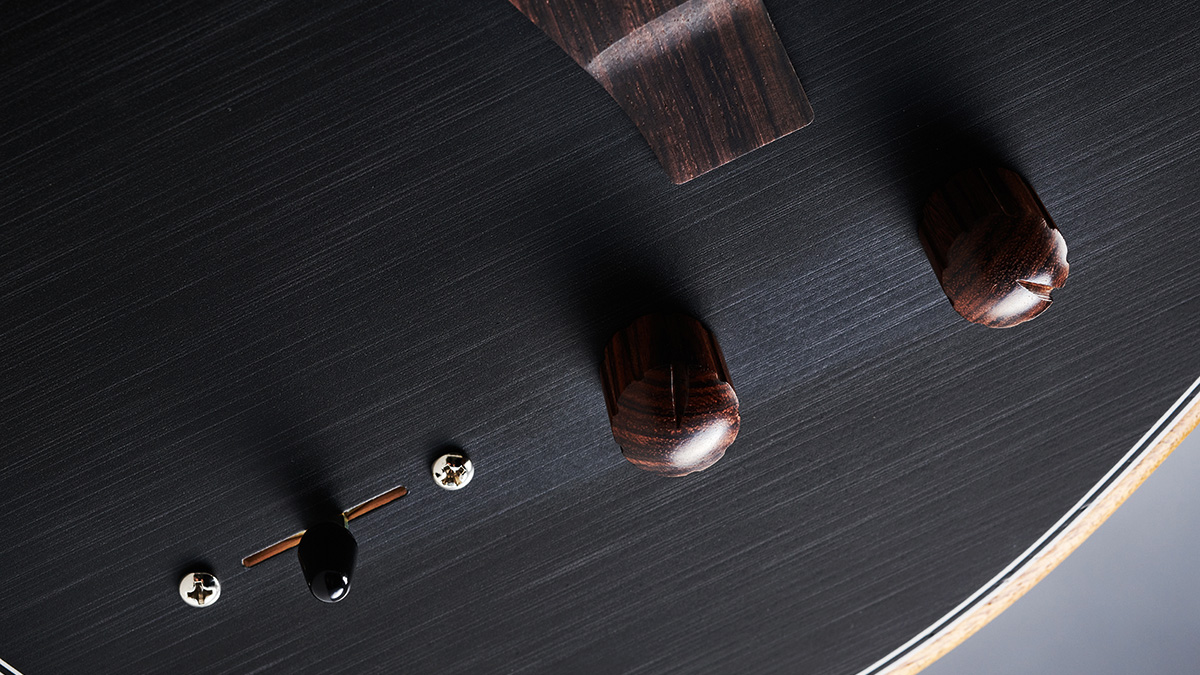
Now with all this tech, it’s easy to overlook just how revolutionary the physical design. Like its US-built kin, the Player Series Acoustasonic Telecaster has a Micro-Tilt neck angle adjustor for making setups a breeze. Not that it was needed here. The factory setup was slinky but buzz-free.
Fender has used a piece of solid Sitka spruce for the top, with mahogany on the back and sides, and by now we are all used to the doughnut, right? Or to give the soundhole its proper name, the Stringed Instrument Resonance System (SIRS).
The mahogany neck is carved into a Modern Deep C-shape profile and topped with a rosewood fingerboard with 22 narrow tall frets.
There’s also a Graph Tech Tusq nut, a set of sealed and staggered die-cast tuners, and its worth noting that it ships with a set of Fender Dura-Tone coated phosphor bronze acoustic guitar strings (11-52), because it’s just one of the things that might have you caught asking yourself if you are playing an acoustic electric or and electric acoustic, and does it even matter anyway?
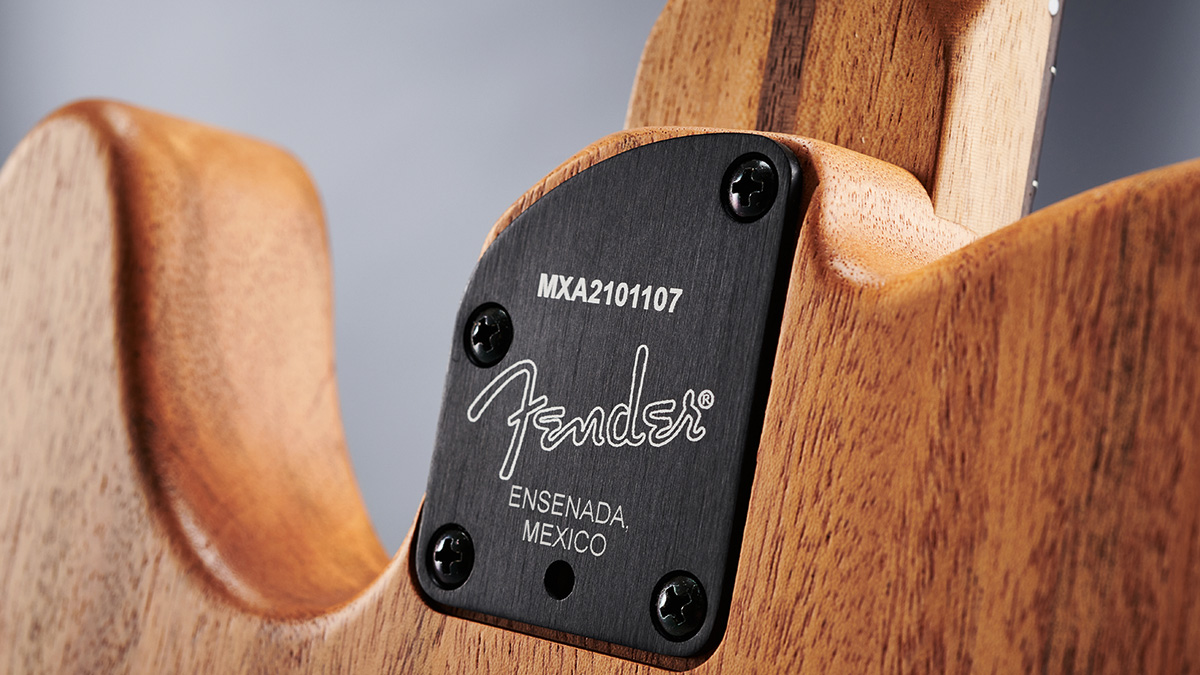
Fender Acoustasonic Player Telecaster: Performance and verdict
Fundamentally, a fully hollow Telecaster with a soundhole and a convincing unplugged acoustic sound plus six on-tap voices makes for a whole lot of fun. To some players, a set of 11s on an electric guitar will make string bends seem like Olympic judo, but on this Acoustasonic hybrid format, it seems like a happy medium.
Much of the physics of the Player Series Acoustasonic Telecaster are just that, finding the happy medium between electric and acoustic design. The compact body is less obtrusive than a typical acoustic, and allied with the neck and the 25.5” scale, it makes this feel like a Telecaster all right, albeit one that is all-neck when it comes to the weight.
But even without going through an amplifier, it sounds good; tight, controlled, musical. Playing the Player Series Acoustasonic Tele unplugged doesn’t feel like you are just killing time before plugging in.
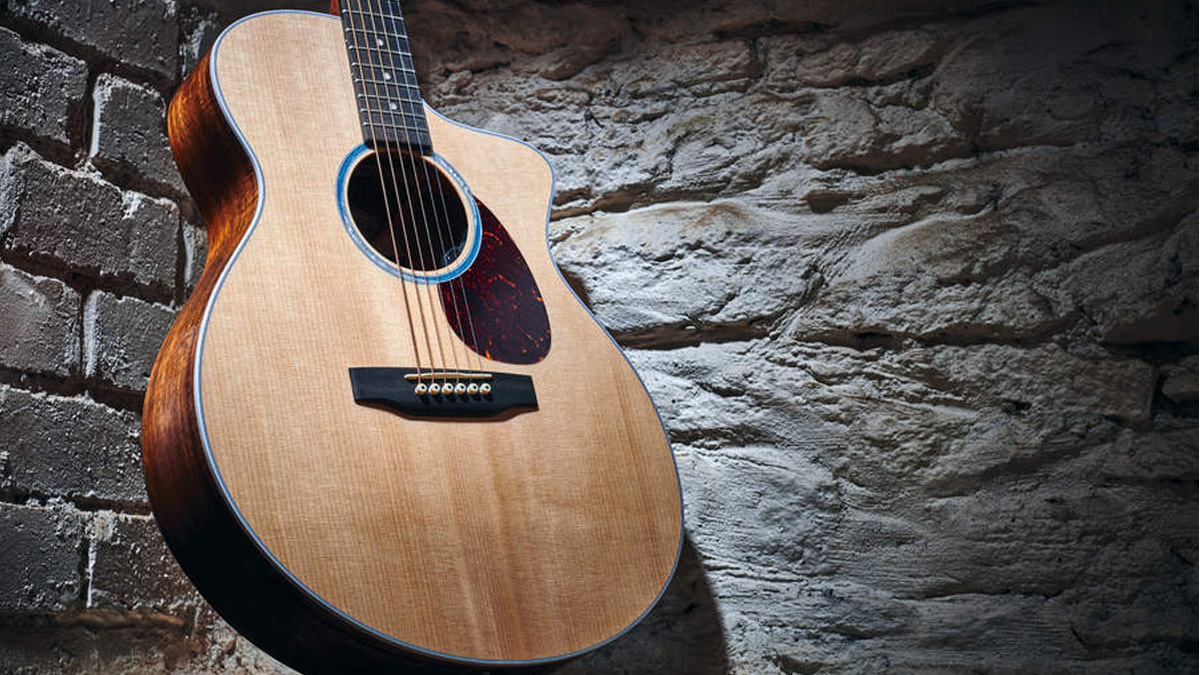
• Martin SC-13E
Once you get past the radicalism of the design, the SC-13E may overwhelm you with its lightning quick playability and stage-ready electronics. Very cool indeed.
• Fender American Acoustasonic Telecaster
The US Acoustasonic Telecaster expands your tonal options and the original trailblazer for the Acoustasonic enterprise remains a top-class instrument that changes how we think of the guitar.
• Fender American Acoustasonic Jazzmaster
The Acoustasonic Jazzmaster is a serious investment but for the right player, it’s a wise one. If you lean on a looper for live performance, it could be a real gamechanger.
When you do, there will be the question of whether a regular guitar amp or an acoustic guitar amp would be a better fit. This, of course, depends on how you intend to use the guitar.
If you favour its two acoustic voices of position three, an acoustic amp is a better bet. But if you are approaching this as a Telecaster that just happens to have transmogrified into a bold acoustic electric hybrid then by all means your regular guitar amp should serve you well.
Even in positions three, that piezo is rendered well. The acoustic voicings are well chosen. The rosewood dread voicing really does cater to the singer-songwriter who wants to hit a big chord and let it bloom, while the warmth and detail of the small-bodied acoustic voice is sure to be a hit with fingerstylists.
The Lo Fi voicings are fascinating. Here is where the true hybrid tones are, and as such, there are fewer references for what we are hearing. The sound is just coming from the piezo and as you turn the blend control it adds drive. In a sense, this is a sound that almost exists outside of the spectrum of acoustic/electric tones, and is sure to support pedalboard experimentation.
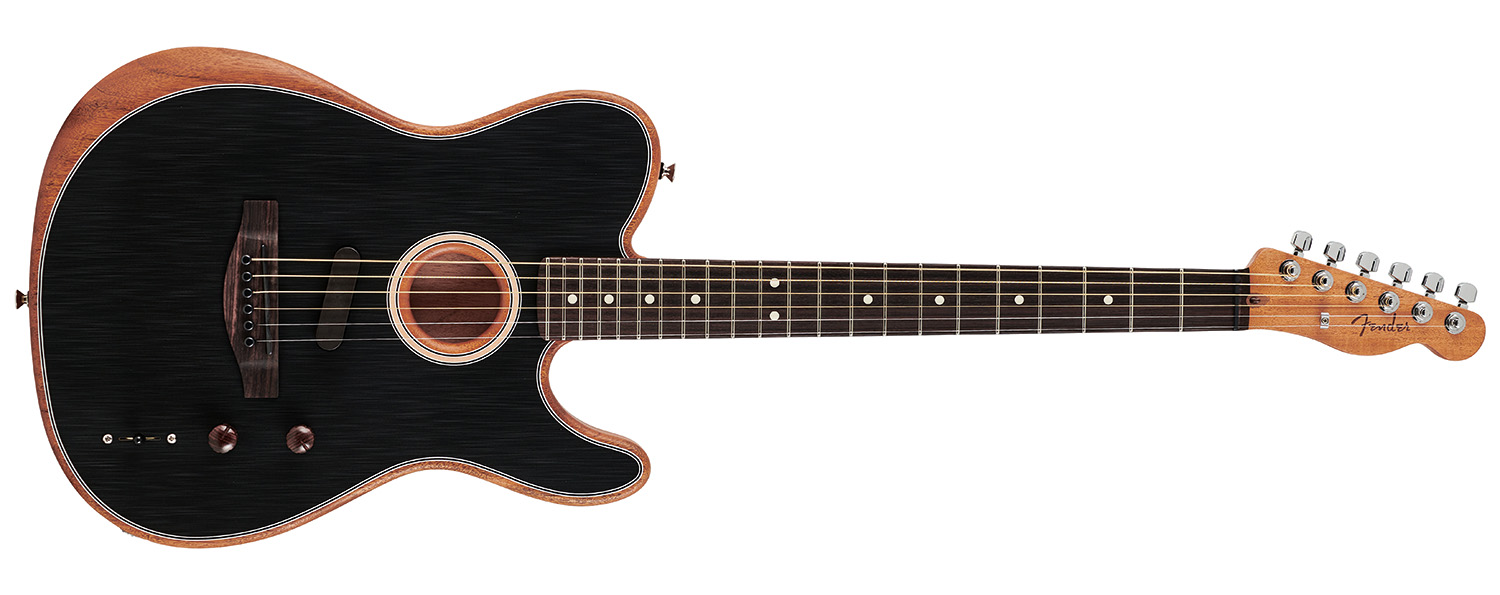
Park yourself on position one for a more traditional electric guitar experience, but don’t necessarily expect a traditional Telecaster experience. Fender promises twang but this isn’t Dwight Yoakam levels of twang. It is warmer, with a little more width than you’d expect from a Tele’s bridge pickup. That said, it can be pressed into service of many different kinds of styles, perhaps some that are all your own. That, in sum, is the sort of thing the Acoustasonic format encourages.
MusicRadar: The onboard voice options might have been scaled down but the Acoustasonic Telecaster sticks the landing as a Player Series model, in what could be one of the guitar to make the hybrid build truly go mainstream.
Fender Acoustasonic Player Telecaster: The Web Says
“Our action is low but the resonance is still sweet. It’s also great to see that Fender has included the excellent Micro-Tilt neck angle adjustment feature, which will help even the fussiest of us to get the perfect action coupled. For all this, it’s an acoustic guitar that will bring new approaches from your playing you even plug in.”
Total Guitar
“Dang, this thing is just so easy to play. First of all, at a little over 2kg it’s practically not there at all... the thinline body shape, complete with forearm chamfer, means it sits in the lap as snugly as any solidbody.
“Best of all, though, is the neck. It’s pleasingly slim, with lightly rolled edges and a thin satin finish... As a guitar to idly strum on while half-watching quiz shows, this is instant and effortless good fun”
Guitar
Fender Acoustasonic Player Telecaster: Hands-on demos
Fender
PMTVUK
Sweetwater
Andertons
Peach Guitars
Guitar
Fender Acoustasonic Player Telecaster: Specifications
- BODY: Mahogany with solid Sitka spruce top
- NECK: Mahogany, Deep C-shape
- SCALE: 25.5”
- FINGERBOARD: Rosewood
- FRETS: 22, Narrow Tall
- PICKUPS: Under-saddle piezo, Fender N4 Noiseless single-coil magnetic
- CONTROLS: Master Volume, Blend Knob, 3-Way Switch
- HARDWARE: Graph Tech TUSQ, Fender Standard Cast/Sealed Staggered tuners
- FINISH OPTIONS: Arctic White, Brushed Black [as reviewed], Butterscotch Blonde, Shadow Burst
- CONTACT: Fender
MusicRadar is the number one website for music-makers of all kinds, be they guitarists, drummers, keyboard players, DJs or producers...
- GEAR: We help musicians find the best gear with top-ranking gear round-ups and high-quality, authoritative reviews by a wide team of highly experienced experts.
- TIPS: We also provide tuition, from bite-sized tips to advanced work-outs and guidance from recognised musicians and stars.
- STARS: We talk to musicians and stars about their creative processes, and the nuts and bolts of their gear and technique. We give fans an insight into the craft of music-making that no other music website can.
“Every note counts and fits perfectly”: Kirk Hammett names his best Metallica solo – and no, it’s not One or Master Of Puppets
Ranked: Bon Iver's albums, from Sable, Fable to For Emma, Forever Ago
“Its mission is simple: unleash the power of any amplifier or line-level source without compromise”: Two Notes promises a “watershed” in tube amp control with the Torpedo Reload II











